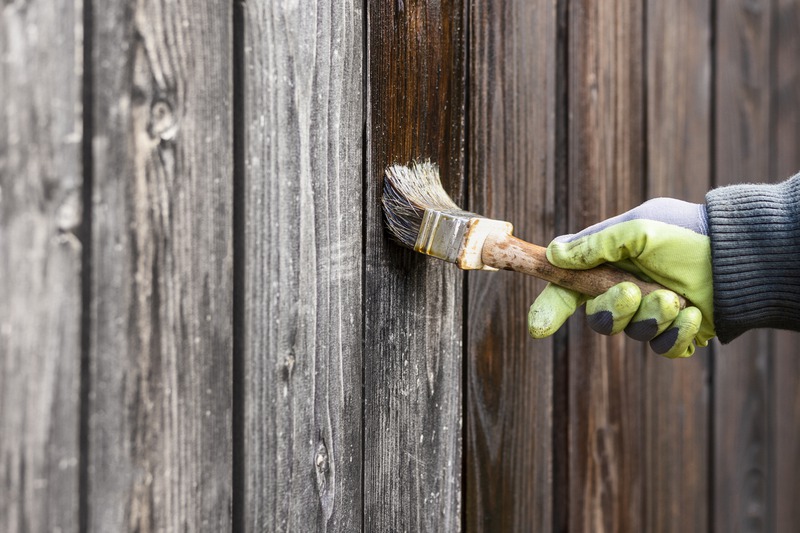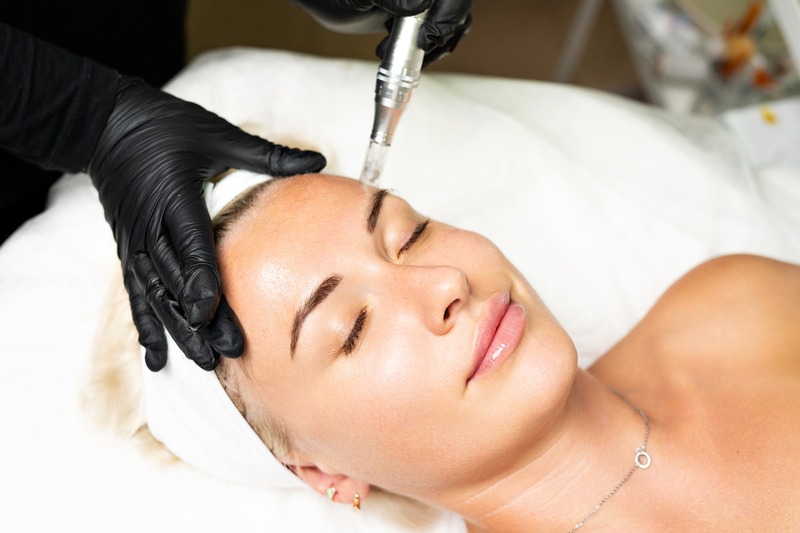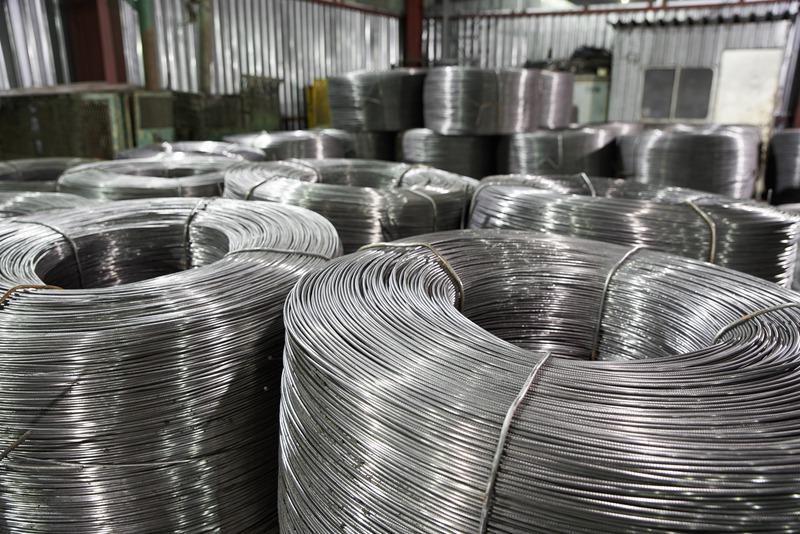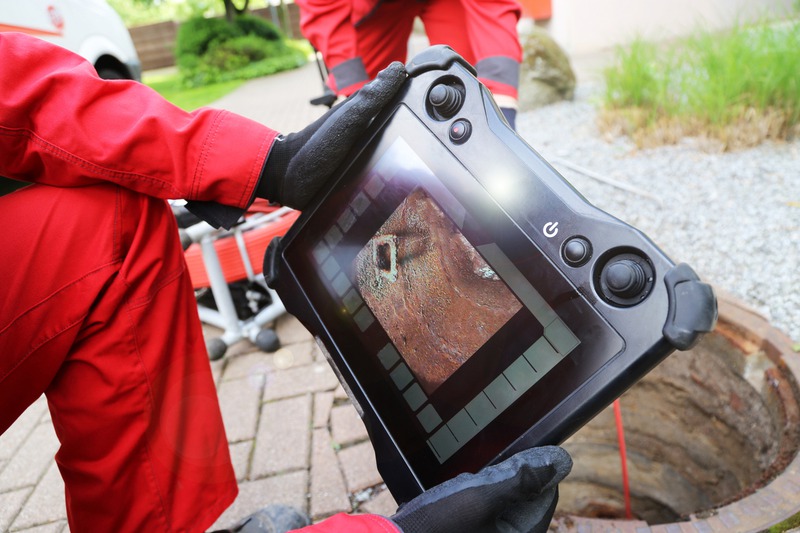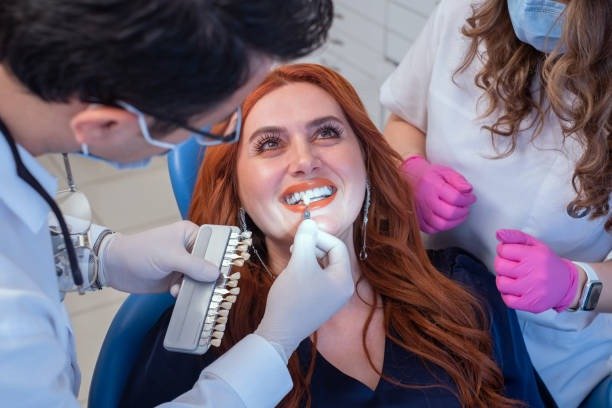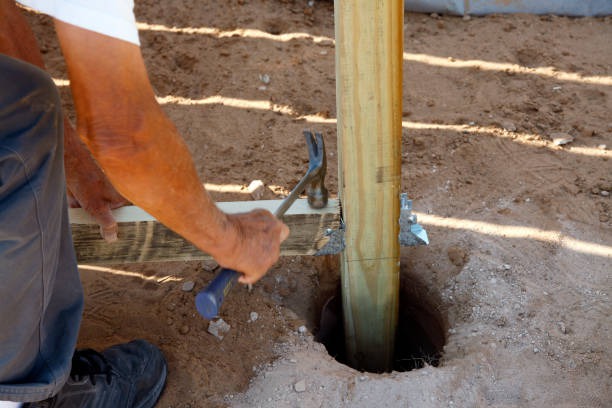Your fence isn’t just a boundary for your property; it’s an essential part of your home’s exterior appeal. A well-maintained fence reflects the care and attention you pay to your entire property. One of the fundamental ways to keep your fence looking pristine is through professional wood staining. But why is this so crucial? Let’s explore.
The Aesthetic Appeal of a Beautifully Stained Fence
First impressions matter. A fresh, well-applied stain can enhance the natural grain of the wood, bringing out the unique patterns and colors. This adds character and charm to your home, creating an inviting atmosphere. A well-stained fence complements landscaping, architectural style, and personal aesthetic, ensuring your property portrays the image you want.
Protection Against the Elements
Your fence is constantly exposed to weather elements like sun, rain, and snow. These can lead to warping, cracking, and discoloration. Professional staining helps create a protective barrier that shields your wood from UV rays and moisture, extending the lifespan of your fence. Regular maintenance with a professional touch ensures that the protective layer remains intact and effective.
Understanding UV Ray Protection
-
UV rays can fade and bleach the natural color of wood.
-
Stains often include UV-inhibitors to prevent fading.
-
Consistent staining mitigates long-term sun damage.
Moisture and Mold Resistance
-
Moisture can cause wood to swell, leading to warping.
-
Staining helps repel water and reduce mold growth.
-
It minimizes cracking and splitting due to weather changes.
Cost-Effective Maintenance
While initial professional wood staining might seem like an expense, it is a cost-effective investment. Proper maintenance reduces the need for frequent repairs or replacement, saving you money over time. Think of it as preventative healthcare for your fence—a small cost now to avoid larger expenses later.
Enhancing Property Value
A beautifully maintained fence can enhance your property’s curb appeal, potentially increasing its market value. Prospective buyers are likely to see a well-stained fence as a sign of a well-cared-for home. The aesthetic appeal and extended lifespan add to your property’s attractiveness and worth.
The Expertise of Professional Staining
Professional wood staining requires expertise and experience that DIY methods might lack. Professionals know the right stains, techniques, and timing to ensure your fence gets the best treatment. They can assess your wood type and choose the most suitable products for optimal results.
Choosing the Right Stain
-
Not all wood types require the same stain.
-
Professionals can recommend the best oil-based or water-based options.
-
Understanding stain compatibility prevents potential damage.
Application Techniques
-
Proper preparation and application techniques are essential for even coverage.
-
Experts ensure that corners, edges, and hard-to-reach areas are well-coated.
-
Professional tools and skills make a noticeable difference.
Time Efficiency
Let’s face it: staining can be a time-consuming task, especially if you’re not familiar with the process. Hiring professionals allows you to focus on other essential tasks while leaving the staining work to those who know it best. This not only ensures a faster job but also one done with precision and care.
Eco-Friendly Staining Options
If environmental impact is a concern, professionals can guide you to eco-friendly stain options that are safe for your family and the planet. These sustainable choices often offer the same benefits as traditional staining products without the negative ecological footprint.
Customization for Personal Style
Your fence should reflect your unique style and preferences. With a variety of staining colors and finishes, professionals can help you achieve the perfect look to match your home and garden. Whether you prefer a natural look or a bold statement, wood staining can be customized to your taste.
Addressing Local Needs
Living in particular areas might expose your fence to unique environmental factors. For those considering wood staining Eagle services, professionals familiar with local conditions can recommend specialized treatments that account for regional weather and environmental challenges.
Adapting to Local Climate
-
Humidity and temperature changes can affect wood differently.
-
Selecting appropriate products can prevent local environmental impacts.
-
Tailored solutions offer the best protection for specific climates.
Complementary Services
When staining your fence, it might be a good time to consider other upgrades, such as a gate installation in Eagle. Having a seamless and cohesive look between your fence and gate can enhance the overall aesthetic. Professionals often offer complementary services that align with staining projects, ensuring a unified appearance.
Expert Insight and Advice
Trusting a professional Boise fence company means gaining access to valuable insights and advice. They can guide you on maintenance schedules, future treatments, and any necessary adjustments based on the fence’s condition. This ongoing support can make a significant difference in how your fence looks and lasts.
Final Thoughts
Your fence is more than just a boundary; it’s a statement. Professional wood staining is essential in maintaining its appearance, durability, and value. By working with experts, you ensure your fence is not only protected but also an attractive part of your home. So whether you need a reliable professional for staining or other enhancements, investing in professional services is a step toward preserving the beauty and integrity of your fence for years to come.
